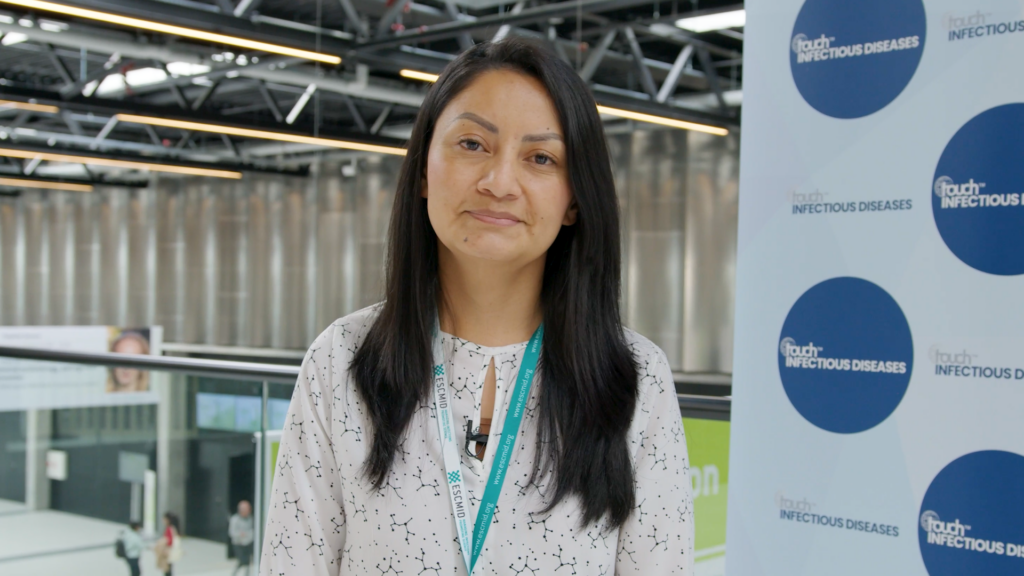National Action Plans (NAPs) for antimicrobial resistance (AMR) are crucial in reducing the impact of antimicrobial resistance on global health. They are crucial in addressing this threat by providing a coordinated approach to reducing the emergence and spread of AMR.
Dr Esmita Charani (Centre of Excellence Infectious Diseases Research, University of Liverpool, Liverpool, UK) joins us to discuss the gaps and challenges of existing NAPs for AMR, and highlight a recent analysis conducted to investigate implications of variation in surveillance data platforms, and the impact that COVID-19 had on these platforms.
The abstract ‘An analysis of existing National Action Plans for antimicrobial resistance: understanding implications of variation in surveillance data platforms‘ (Abstract number: P0651) was presented at ECCMID 2023, 15-18 April 2023, Copenhagen, Denmark.
Questions
- What are the gaps and challenges of existing National Action Plans (NAPs) for antimicrobial resistance (AMR)?
- What were the aims and design of the analysis?
- What were some of the key findings from your analysis?
- Based on these findings, what will be the implications of implementing variation in surveillance data platforms?
- What impact did the COVID-19 pandemic have on the implementations of AMR NAPS?
Disclosures: Esmita Charani has nothing to disclose in relation to this video interview.
Support: Interview and filming supported by Touch Medical Media Ltd. Interview conducted by Victoria Jones/ Katey Gabrysch.
Filmed in coverage of the 33rd European Congress of Clinical Microbiology & Infectious Diseases.
Access more content on antimicrobial resistance & for further ECCMID 2023 highlights visit here.
Transcript
I am Esmita Charani and I am currently a Reader on Infectious Diseases, Antimicrobial Resistance and Global Health at the University of Liverpool, and I’m about to take up a fellowship at the University of Cape town, funded by the Wellcome Trust, to investigate intersectional research in antimicrobial resistance.
What are the gaps and challenges of existing National Action Plans (NAPs) for antimicrobial resistance (AMR)?
We recently conducted a study specifically investigating the opportunities for research and development that stem from the existing national action plans of all the countries that do have them, this is published in Lancet Global health. We identified the challenges many countries have in operationalizing the objectives that they’ve identified in their national action plans, in relation to antimicrobial resistance, and particularly the challenges around engaging with policy makers and the financing and economic support to develop implementable objectives within the National Action Plans, but also to strengthen the medicine supply chains, which just talked about a lot in the National Action plans, but actually is not delivered effectively in many countries – we didn’t see the evidence of that. Particularly with many of National Action plans now coming up to the end of the first sort of cycle and up for renewal. And the stresses of the COVID 19 pandemic, which means that a lot of the resources were redirected to responding to the pandemic. This is actually a really opportune time for countries to take stock of the challenges with antimicrobial resistance, particularly around surveillance, being able to have effective data to support the changes that are being targeted through the implementation of National Action plan.
What were the aims and design of the analysis?
The first analysis, like I said, was a look at the status quo in terms of National Action plans for different countries. And we found a variation in the data availability around antibiotic consumption and surveillance of key pathogens by different countries. And this variability was not limited to different regions of the world throughout the world, whether it’s high income or low and middle income country settings. There are challenges in developing robust data to support the objectives of the National Action plan. Then we did a nested study and we specifically looked at the surveillance around key pathogens. We looked at E. coli, strep pneumonia, staph aureus and Klebsiella. And what we identified is that for these key pathogens, there are challenges in terms of the congress and the data from National Action Plans that is being included in the plans, but also within the surveillance systems globally. We have GLASS, we have ATLAS, and we have CDC databases which countries are advised to report data to, and what we found for any given country, there are discrepancies in the data being reported to these different databases, and this undermines the validity of the data for each country, but also for being able to make key recommendations based on the data in terms of what needs to change and how we can improve the surveillance we have around these pathogens. So that’s surveillance around pathogens, and also for antibiotic consumption data, there is very limited surveillance data that includes consumption at a national level. So often the data that is presented in the National Action plans to undermine to under line the current problems is based on a single audit or a single study from a particular hospital within the country. We don’t have national data around consumption. This was highlighted in The Lancet paper that was published by Murray and colleagues late last year which specifically looked at this, and they had to resort to modelling in order to be able to quantify antibiotic consumption data for different countries.
What were some of the key findings from your analysis?
The key findings and recommendations we have is that we have a long way to go to develop a baseline system that is applicable to different countries with different resource limitations for surveillance of pathogens, surveillance of antibiotic use. One of the recommendations we have is perhaps this expectation of the surveillance data that is being generated needs to be contextualized so that countries can look at pathogens that are of importance to them, and within their region. Also we need to look at not quantity of data but the quality of data for different countries where it is more difficult to get surveillance on the scale.
Based on these findings, what will be the implications of implementing variation in surveillance data platforms?
I think we need to work a lot more with the international databases that are available for ATLAS GLASS, NCDC, to engage with countries to be able to develop a mechanism for validating the data that is being produced and is being uploaded to these databases. Also, for countries to have the freedom to adopt, to have some level of adaptability for the data that is being fed to these global systems to ensure that it is of relevance and importance to the country. There’s a lot of work to do with policymakers, but also with laboratories within the countries for WHO to engage with different countries and really evaluate the ability of different countries to be able to produce data on scale in a sustainable manner, that can help us advise what we are doing in terms of interventions and antimicrobial resistance.
What impact did the COVID-19 pandemic have on the implementations of AMR NAPS?
We had a lot of redirecting of resources during COVID 19 and lot of the stewardship interventions that have been implemented in countries had to be put on hold because we’re all working with resource limitations wherever we are working into health care. What that has meant is that now that the COVID 19 pandemic is under control to some extent and we are stepping back into the AMS space, it’s important for us to revaluate the impact of the pandemic on how we are using stewardship, how we are using antibiotics and prescribing antibiotics, but also on the resource availability in different settings and how we can optimize stewardship with the resources we have.









